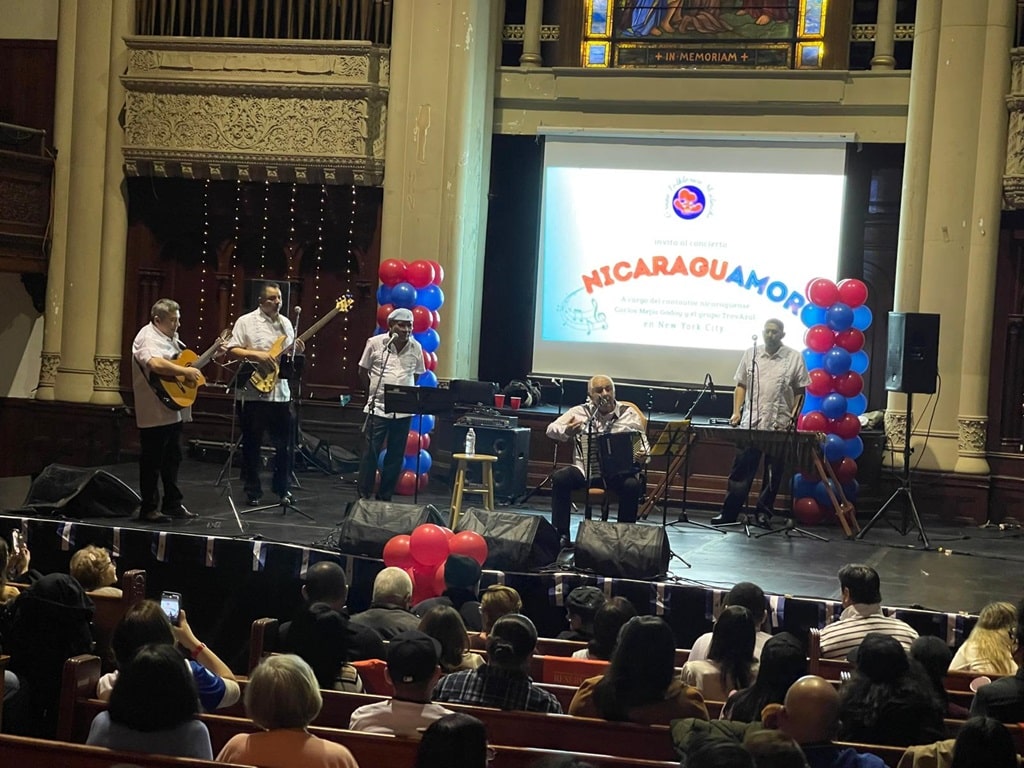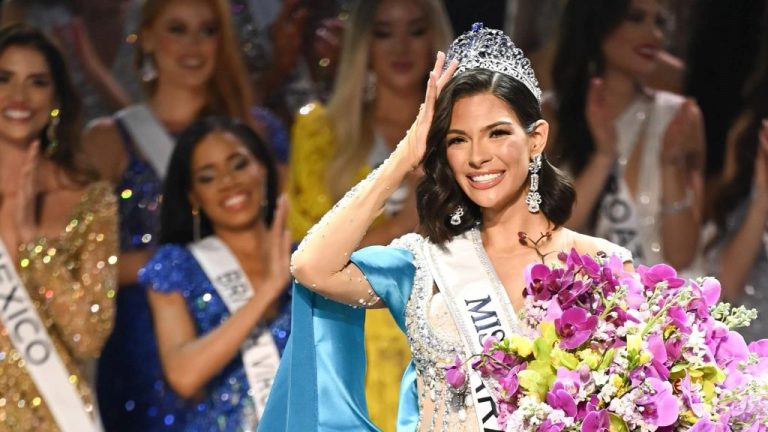25 de enero 2024

“NicaraguAmor” Cultural Caravan for Nicaraguans in the USA

PUBLICIDAD 1M
PUBLICIDAD 4D
PUBLICIDAD 5D
What the Ortega regime hates most is not being able to control the narrative regarding Nicaraguan Sheyniss Palacios’ coronation as Miss Universe 2023

The scene was a timeworn cliché, repeated over decades in countless beauty contests. The moment of suspense stretched out for at least an extra minute, until the announcement of the final winner, who – as in all beauty pageants of worth – bursts into tears. Sheyniss Palacios, Nicaraguan beauty queen, had just been crowned Miss Universe 2023, leaving Antonia Porslid, Miss Thailand, in second place, all on an elaborate set constructed at the National Gymnasium in El Salvador. It was November 18, 2023.
The Miss Universe contest, that age-old event so widely criticized in recent years for keeping the women contestants inside the exclusive bubble of beauty, silence, and masculine adoration, was invested with new meaning for many this time. It all began with Salvadoran President Nayib Bukele’s announcement in January 2023 that the event would be held in his country.
With this gesture, Bukele followed in the footsteps of Colonel Arturo Armando Molina, one of the last heads of El Salvador’s military dictatorship, who used the contest in 1975 to give himself a varnish of legitimacy in the face of multiple denunciations of human rights abuses. Molina was one of the first rulers to make himself a central figure in the event and to personally greet all the attendees. Sound familiar?
The other new meaning arose from the deeply emotional reaction of Nicaraguans. Dozens of videos are available on YouTube, showing families totally glued to their TV screens with bated breath, while they wait to hear who was the Miss Universe winner: Sheynnis or Antonia. The triumph of their compatriot led them to scream, cry, jump up and down, dance, hug each other. And something no less important: after screaming out the name of their queen – “Sheyniss!!” – another cry rose up in unison from the bottom of their lungs, with voices breaking in emotion: “Nicaragua! Nicaragua! Nicaragua!!!”
More than exaggerated, their reactions were surreal. Like the government of Nicaragua itself. For that reason, they were coherent. A song was written just a few days after her coronation: “We love you Sheyniss.” The lyrics don’t only say that the queen is “the loveliest thing that all we Nicas have.” It also makes a veiled reference to their reality. “And the Nicas that are inside and outside our borders… stomp our feet to this.”
Since the 2018 protests, the dictatorship of Daniel Ortega has criminalized the use of the national flag. Its public use could mean immediately going to jail. Sheyniss Palacios was photographed in that cycle of protests that left over 300 victims. Since then, the independent media have reported that the majority of the dead were simple demonstrators who were killed by the police and the Ortega shock troops.
Sheyniss the beautiful, gave Nicaraguans the freedom to once again shout the name of their country in the street and wave their flag, amid tears. I asked a Nicaraguan journalist friend who has been in exile for some time: “What do you think the crown won by Sheyniss Palacios means for Nicaraguans?”
“The impact of Sheyniss’ triumph has to do with the fact that she represents the best values of society: humility, the fact that she rose from below, makes us identify with her. Those values are universal, and we all identify with them. People feel it as the triumph of the woman who grew up in the barrio, who used to sell buñuelos to finance her studies,” he told me.
For the three weeks that followed Sheyniss’ victory, the Ortega regime blocked Karen Celebretti, organizer of the Miss Nicaragua contest, from entering the country, then effected a legal banishment without calling it that. They arrested her husband and son and accused them of money laundering and treason to the homeland. After two months in jail, Celebretti’s family was expelled from the country; they’re currently living in Mexico.
There’s also the case of the Nicaraguan urban graffiti artist Kevin Laguna, who the police stopped from finishing a mural with Sheyniss’ face on it. Shortly afterwards, his colleagues denounced his disappearance. Up until now, there’s been no news of his whereabouts.
Other Nicaraguan journalists in exile have noted that what the Ortega regime hates is not being able to control the narrative about what people feel and demonstrate regarding Sheyniss Palacios.
Without intending to, the beauty queen has put in evidence the dictator’s crudest face – the one who must control the very thoughts of his people; who writhes in fury when he can’t impose his own narrative and discovers that the preference of the majority rests on another person, not himself; that the object of the personality cult has switched to a new figure. Sound familiar?
My friend defined it better: “Freedom is always a beautiful act that dictatorships can’t stand, because their face denotes the complete opposite.”
Singer-songwriter Luis Enrique Mejia Godoy indicated on his social media sites what Sheyniss now signifies for Nicaragua. “Thank you dear Sheyniss for your courage and dignity. Thank you, our little grackle of peace, for uniting us in times of so much despair. I celebrate your triumph, Nicaragua’s triumph, by singing to you: “Woman of the new century, recovered landscape, butterfly flight, explanation of all that’s been created.”
Sheyniss Palacios is more than a beauty queen. She’s Nicaragua. Nicaragua. Nicaragua.
This article was published in Spanish in Confidencial and translated by Havana Times. To get the most relevant news from our English coverage delivered straight to your inbox, subscribe to The Dispatch.
PUBLICIDAD 3M
Periodista en Revista Factum (El Salvador). Ha trabajado en La Prensa Gráfica (El Salvador), cubriendo temas culturales, medioambientales, seguridad, violencia, investigación y crimen organizado. Desde 2013, ha trabajado y colaborado con: Connectas (Colombia), Plaza Pública (Guatemala), Centro Latinoamericano de Investigación Periodística (CLIP), Ojo Público (Perú), Alharaca (El Salvador), International Center for Journalists (ICFJ), International Consortium of Investigative Reporters (ICIJ), Agenda Propia (Colombia), Dromómanos (México), entre otros.
PUBLICIDAD 3D